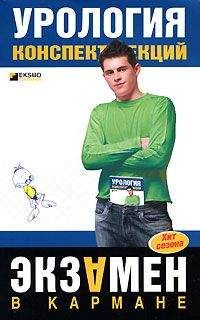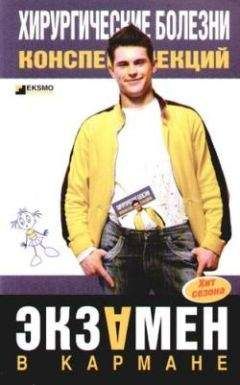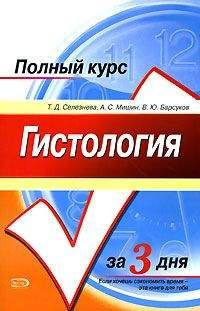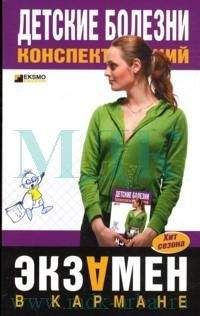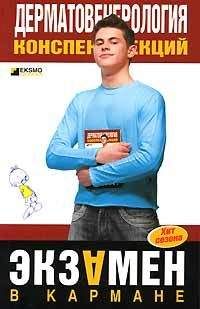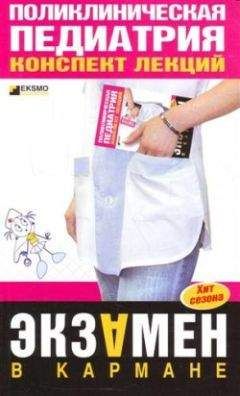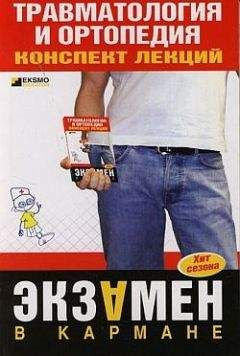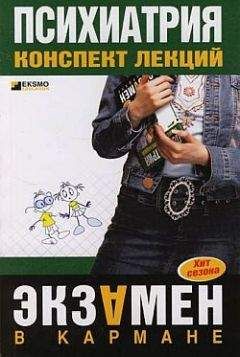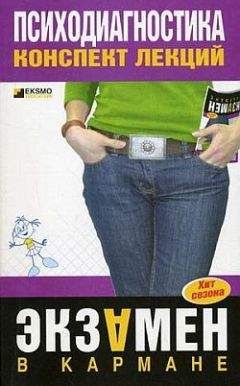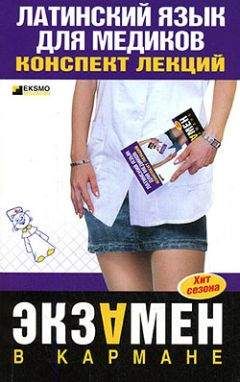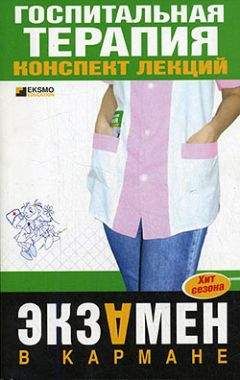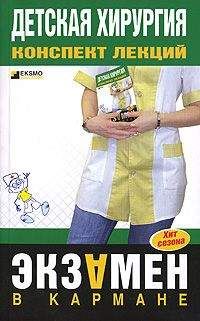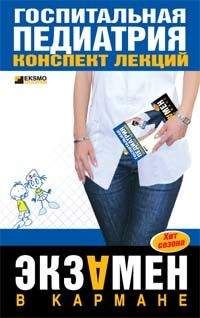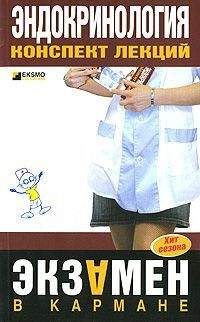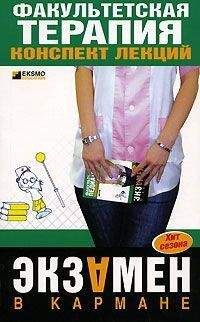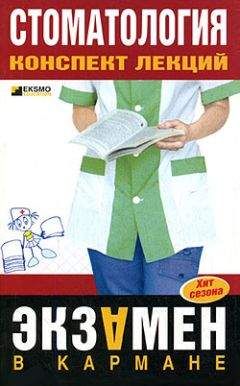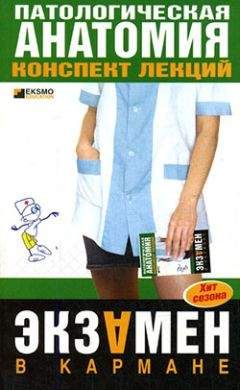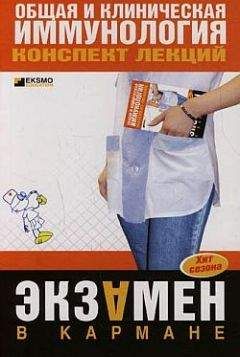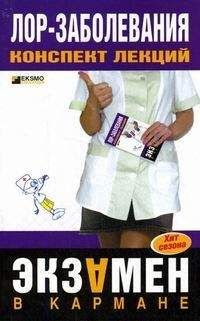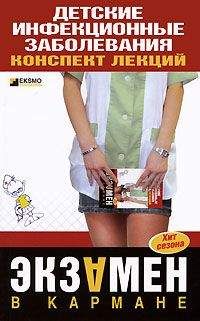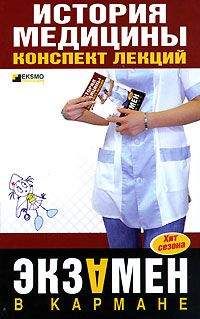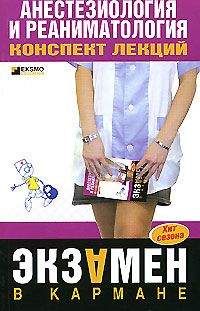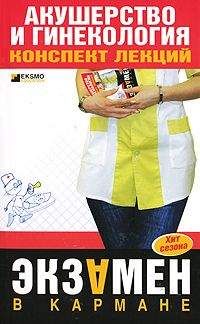Елена Беликова - Английский язык для медиков: конспект лекций
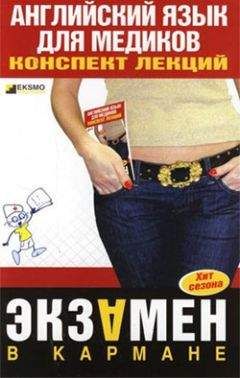
Все авторские права соблюдены. Напишите нам, если Вы не согласны.
Описание книги "Английский язык для медиков: конспект лекций"
Описание и краткое содержание "Английский язык для медиков: конспект лекций" читать бесплатно онлайн.
Представленный вашему вниманию конспект лекций предназначен для подготовки студентов медицинских вузов к сдаче экзамена. Книга включает в себя полный курс лекций по английскому языку, написана доступным языком и будет незаменимым помощником для тех, кто желает быстро подготовиться к экзамену и успешно его сдать.
School begins in September.
We rest on Sunday.
Запомните следующие застывшие словосочетания.
After – work
After – school
From – work
From – school
Перед порядковыми числительными употребляется определенный артикль.
Our classroom is on the second floor.
Today is the tenth of May.
Вставьте артикль, где необходимо.
1. There are three rooms and. kitchen in our new flat.
2. My new dress is made of… silk.
3. If you want to write something on… blackboard, you must have… piece of… chalk.
4. Are there any pupils in… classroom?
5. I have… new English book… book is very interesting.
6. There is… garden in… front of our school… garden is not large, but it is very nice.
7… May is… fifth month of the year.
8… Saturday is… sixth day of the week.
9… Sunday is… day off.
10. My friends live in… small town. It is… new town.
11… streets in… town are broad and straight.
12. There are… beautiful buildings in them.
13… town is very green, and so… air is fresh.
14. There are… beautiful parks and gardens in… town.
15… people like to go there after… work.
16. In… evening you can hear… sounds of… music from… parks.
17. There are… schools,… libraries,… hospital,… theatre,… cinemas,… polyclinics and… kindergartens in… town.
18. This is… classroom… classroom is huge and light.
19. There is… picture on… wall.
20. What is… date today? It is… seventh of… December.
Answer the questions.
1. What do bones form?
2. How do bones act?
3. What is the body's major producer of both red and white blood cells?
4. What tendencies do bones have?
5. In how many ways are bones generally classified?
6. When does the formation of bone tissue begin?
7. Is compact bone strong or note?
8. What is called periosteum?
9. In what way does the bone loose its rigidity and become flexible?
10. Where are the osteocytes located?
Make the sentences of your own using the new words (10 sentences).
Find the definite and indefinite articles in the text.
ЛЕКЦИЯ № 12. Skull
The extensive chapter covers the major bones of the skeleton as well as their associated muscles and tendons. Blood suppfy and inner-vation are reviewed for each muscle group. Bones of the skull may be classified as belonging to the neurocranium (the portion of the skull that surrounds and protects the brain) or the viscerocranium (i. e., the skeleton of the face). Osteology: bones of the neurocranium: Frontal, Parietal, Temporal, Occipital, Ethmoid, Sphenoid.
Bones of the viscerocranium (surface): Maxilla, Nasal, Zygomatic, Mandible. Bones of the viscerocranium (deep): Ethmoid, Sphenoid, Vomer, Lacrimal, Palatine, Inferior nasal concha Articulations: Most skull bones meet at immovable joints called sutures. The sole exception is the temporomandibular joint, a synovial joint that has a hinge-gliding movement. The coronal suture is between the frontal and the parietal bones. The sagittal suture is between two parietal bones. The lambdoid suture is between the parietal and the occipital bones. The bregma is the point at which the coronal suture intersects the sagittal suture and is the site of the anterior fontanelle in an infant.
The lambda is the point at which the sagittal suture intersects the lambdoid suture and is the site of the posterior fontanelle in an infant. The pterion is the point on the lateral aspect of the skull where the greater wing of the sphenoid, parietal, frontal, and temporal bones converge. The temporomandibular joint is between the mandibular fossa of the temporal bone and the condylar process of the mandible.
The parotid gland is the largest of the salivary glands and has a dense connective tissue capsule. Structures found within the substance of this gland include the following: Motor branches of the facial nerve. CN VII enters the parotid gland after emerging from the stylomastoid foramen at the base of the skull. Superficial temporal artery and vein. The artery is a terminal branch of the external carotid artery.
External carotid artery: Retromandibular vein, which is formed from the maxillary and superficial temporal veins.
FACE: The muscles of facial expression are derived from the second pharyngeal arch and are supplied by motor branches of CN VII Таблица 2.
Great auricular nerve, which is a cutaneous branch of the cer vical plexus. Auriculotemporal nerve, which is a sensory branch of V3. It supplies the TMJ and conveys postganglionic parasympathetic fibers from the otic ganglion to the parotid gland. Parotid (Stensen's) duct, which enters the oral cavity at the level of the maxillary second molar. The facial artery is a branch of the external carotid artery in the neck. It terminates as the angular artery near the bridge of the nose. The facial vein parallels the course of the facial artery. It terminates by joining the anterior branch.
New words
extensive – обширный
to cover – покрывать
brain – мозг
frontal – лобная
parietal – теменная
temporal – височная
occipital – затылочная
ethmoid – решетчатая
sphenoid – сфеноидальная
maxilla – верхняя челюсть
nasal – носовой
zygomatic – скуловой
mandible – нижняя челюсть
ethmoid – решетчатая
sphenoid – клиновидная
vomer – сошник
lacrimal – слезная
palatine – небная
nasal concha – носовая раковина
Запомните следующие застывшие словосочетания.
to have (cook, make, prepare) – breakfast
– lunch
– tea
– dinner
– supper
Вставьте артикль, где необходимо.
1… third lesson today is… lesson of English.
2. Pete, go to… blackboard.
3. After school I usually go… home.
4. My father always comes from… work late: at eight o'clock or at… half past night.
5. But on… Friday he comes… home early: at half past four or at… quarter to five.
6. On… Satur day and on… Sunday he does not go to… work.
7. I go to… school in… morning, so I get up early.
8. I usually get up at… quarter past seven.
9. I go to… bathroom, turn on… water and wash my face and hands.
10. My father and mother also get up early in. morning.
11. My mother works at… office.
12. She is. typist.
13. My father is… doctor.
14. He works at… polyclinic.
15. We have… breakfast in… kitchen.
16. We eat… porridge and… eggs.
17. We drink. tea.
18. My father and mother leave… home for… work at… half past eight.
19. My father goes to polyclinic, and my mother goes to. office.
20. I don't leave… home with my parents.
Answer the questions.
1. What does the extensive chapter cover?
2. What are blood suppfy and innervation reviewed for?
3. How may bones of the skull be classified?
4. Enumerate the bones of the neurocranium?
5. Enumerate the bones of the viscerocranium (deep)?
6. Enumerate the bones of the viscerocranium (surface)?
7. What is the lambda?
8. Where are the muscles of facial expression derived from?
9. What are the muscles of the scalp?
10. What are the muscles of the nose?
Make the sentences of your own using the new words (10 sentences).
Find the definite and indefinite articles in the text.
ЛЕКЦИЯ № 13. Neck
Cervical vertebrae: There are seven cervical vertebrae of which the first two are atypical. All cervical vertebrae have openings in their transverse processes, the foramina transversaria which, when aligned, produce a canal that transmits the vertbral artery and vein.
Atlas: This is the first cervical vertebra (C1). It has no body and leaves a space to accommodate the dens of the second cervical vertebra. Axis: This is the second cervical vertebra (C2). It has a tooth-shaped process, the dens (odontoid process), which articulates with the atlas as a pivot joint. Movement at this joint allows lateral rotation of the head. Hyoid bone is a small U-shaped bone, which is suspended by muscles and ligaments at the level of vertebra C3. It occupies the angle of the throat that separates the neck from the floor oral cavity.
Laryngeal prominence is formed by the lamina of the thyroid cartilage. It is more prominent in men than in women and children.
Cricoid cartilage. The arch of the cricoid, another laryngeal cartilage, is palpable below the thyroid cartilage and superior to the first tracheal ring (vertebral level C6). Triangles of the neck: The neck is divided into a posterior and an arterior triangle by the sternocleidomasto-id muscle. These triangles are subdivided by smaller muscles into six smaller triangles. Posterior triangle is bound by the sternocleidomasto-id, the clavicle, and the trapezius. The floor of the posterior triangle is formed by the splenius capitis, the levator scapulae, and the medial and posterior scalene muscles. Occipital triangle is located above the inferior belly of the omohyoid muscle. Its contents include the following: CN XI is the cranial nerve that supplies motor innervation to the tra-pezius and sternocleidomastoid muscles Cutaneous branches of the cervical plexus are the lesser occipital, great auricular, transverse cervical, and supaclavicular nerves.
Subclavian (omoclavicular, supraclavicular) triangle is located below the inferior belly of the omohyoid. Its contents include the following: Brachial plexus supraclavicular portion – roots, trunk the branches of which enter this region from behind the scalenus anterior muscle. The branches include the dorsal scapular, long thoracic, sub-clavius, and suprascapular nerves.
The third part of the subclavian artery enters the subclavian triangle from behind the scalenus anterior muscle anterior to the brachial plexus. Branches include the transverse cervical and suprascapular arteries.
The subclavian vein passes superficial to scalenus anterior muscle. It receives the external jugular vein, a superficial vein that crosses the sternocleidomastoid muscle.
Anterior triangle is bound by the sternocleidomastoid muse the mid-line of the neck, and the inferior border of the body of the mandible. Muscular triangle is bound by the sternocleidomastoid muscle, the superior belly of the omohyoid muscle, and the midline of the neck. Its contents include the infrahyoid (strap) muscles, which function to control movements the hyoid bone and larynx during speech and deglutition (swallowing). Carotid (vascular) triangle is bound by the ster-nocleidomastoid muscle, the superior belly of the omohyoid muscle and the posterior belly of the digastric muscle. The carotid triangle contains the following: Internal jugular vein; Common carotid artery, bifurcates at the upper border of the thyroid cartilage (i. e., vertebral level C3) to form the internal and external carotid arteries. The external carotid artery has six branches (i. e., the superior thyroid; the ascending pharyngeal, the lingual, the facial, the occipital, and the posterior auricular arteries). The supply structures of the neck and face; vagus nerve; hypoglossal nerve; internal and external laryngeal branches of the superior laryngeal branch of the vagus nerve. The internal laryge-al nerve conveys sensory information from the laryngeal mucosa above the level of the vocal folds, and the external laryngeal nerve supplies motor fibers to the cricothyroid, an intrinsic muscle of the larynx. Digastric (submandibular) triangle is bound by the anterior and posterior bellies of the digastric muscle and the inferi or border of the body of the mandible. The floor of this tri angle is formed by the hyoglos-sus and mylohyoid muscles. It contains the submandibular salivary gland. Submental triangle is bound by the anterior belly of the digastric muscle, the hyoid bone, and the midline of the neck. The floor of this triangle is formed by the mylohyoid muscle. It contains the submental lymph nodes. Root of neck: This area communicates with the superior medi astinum through the thoracic inlet. Structures of the region include the following: subclavian artery and vein. The subclavian artery passes poste rior to the scalenus anterior muscle, and the vein passes ante rior to it. Branches of the artery include: vertebral artery; thyrocervical trunk, which gives rise to the inferior thyroid, the transverse cervical, and the suprascapular arteries; Internal thoracic artery.
Phrenic nerve is a branch of the cervical plexus, which arises from C3, C4, and C5. It is the sole motor nerve to the diaphragm. It crosses the anterior scalene muscle from lateral to medial to enter the thoracic inlet.
Recurrent laryngeal nerve is a branch of the vagus nerve. This mixed nerve conveys sensory information from the laryngeal; mucosa below the level of the vocal folds and provides motor innervation to all the intrinsic muscles of the larynx except the cricothyroid muscle.
Thoracic duct terminates at the junction of the left subclavian and the left internal jugular veins. On the right side of the body, the right lymphatic duct terminates in a similar fashion.
Fascias of the neck: Superficial investing fascia encloses the platys-ma, a muscle of facial expression, which has migrated to the neck.
Deep investing fascia surrounds the trapezius and sternoclei – do-mastoid muscles.
Retropharyngeal (visceral) fascia surrounds the pharynx.
Prevertebral fascia invests the prevertebral muscles of the nee (i. e., longus colli, longus capitis). This layer gives rise to a derivative known as the alar fascia.
The major muscle groups and their innervations. A simple method of organizing the muscles of the neck is based on two basic principles: (1) The muscles may be arranged in group according to their functions; and (2) all muscles in a group share common innervation with one exception in each group.
Group 1: Muscles of the tongue. All intrinsic muscles plus all but one of the extrinsic muscles (i. e., those containing the suffix, glossus) of the tongue are supplied by CN XII. The one exception is palatoglos-sus, which is supplied by CN X.
Group 2: Muscles of the larynx. All but one of the intrinsic muscles of the larynx are supplied by the recurrent laryngeal branch of the vagus nerve. The sole exception is the cricothyroid muscle, which is supplied by the external laryngeal branch of the vagus.
Group 3: Muscles of the pharynx. All but one of the longitudinal and circular muscles of the pharynx are supplied by CNs X and XI (cranial portion). The sole exception is the stylopharyngeus muscle, which is supplied by CN IX.
Подписывайтесь на наши страницы в социальных сетях.
Будьте в курсе последних книжных новинок, комментируйте, обсуждайте. Мы ждём Вас!
Похожие книги на "Английский язык для медиков: конспект лекций"
Книги похожие на "Английский язык для медиков: конспект лекций" читать онлайн или скачать бесплатно полные версии.
Мы рекомендуем Вам зарегистрироваться либо войти на сайт под своим именем.
Отзывы о "Елена Беликова - Английский язык для медиков: конспект лекций"
Отзывы читателей о книге "Английский язык для медиков: конспект лекций", комментарии и мнения людей о произведении.






